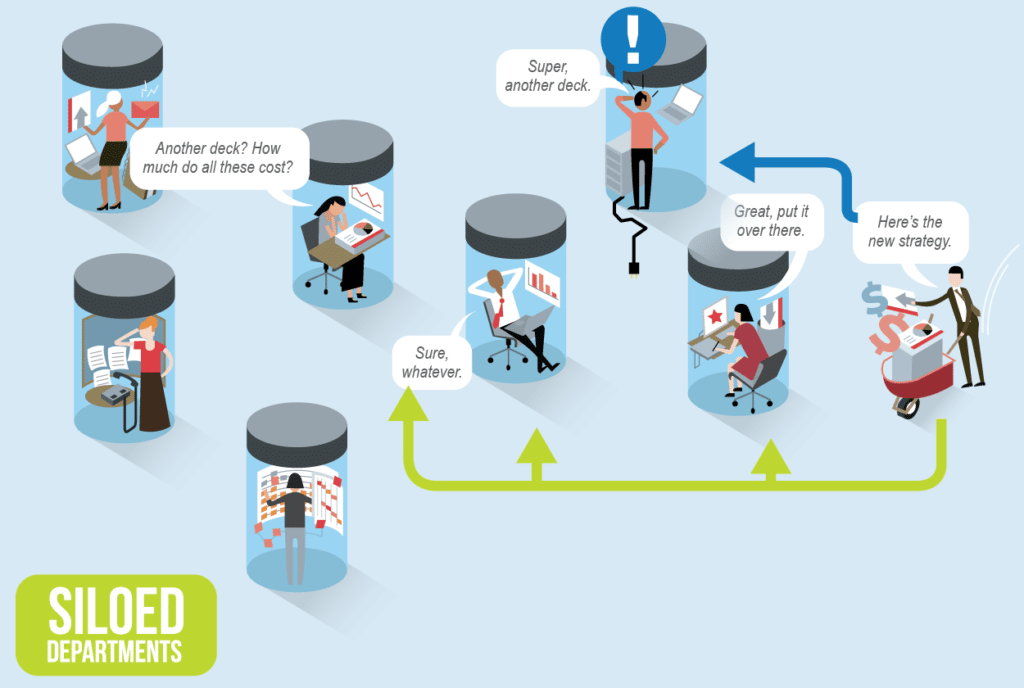Imagine you’re making a sandwich. You walk into the kitchen, grab two slices of bread and then pause; “Where are all of the other ingredients?”. Then you remember, the lettuce is in your living room, the meat is down in the basement and the cheese is over at your neighbour’s house (if there’s even any left!). This simple task has become far more time-consuming and uncertain than it should be.
This all too familiar scenario for Media sellers was a daily struggle for a global media enterprise and their 500+ person ad sales team.
After multiple failed implementation attempts of CRM systems over the past decade it was time for a more holistic approach. The resounding feedback from Sales was that unless they could get a full 360 view of their client base, the system would prove to be more of a burden than an asset. They already had to log into 5 different systems to find different pieces of customer data so why would they want to add a 6th? Who could blame them.
To get started we engaged with the Client and over the course of several weeks conducted deep-dive discovery sessions from both a business process and technical systems perspective. What was uncovered is that Sellers were often operating on incomplete or outdated information. This resulted in a variety of mistakes, and other awkward situations, such as multiple sellers unknowingly pitching to the same account and getting into pricing wars with one another.
The existing siloed setup was causing even more challenges throughout the organization from sales to finance. The executive team had no visibility into the pipeline in a central and consolidated platform. The lack of centralization also affected the account team who didn’t have insight into how they were truly supporting their clients. The team was unable to compare account-based budgets, to what actually happened over the course of a year.
It was clear that the solution had to create a seamless Seller experience to capitalize on all revenue opportunities. Salesforce would become the central hub of all customer data via integrations with the Client’s Master Data Management, Digital OMS, Linear Proposal, Linear OMS, and Budget Management Systems. The Client would also leverage multiple accelerators from the Silverline Media Ad Sales Solution to support these integrations and also drive a best-in-breed sales process.
Now that all parties were aligned on the approach it was time to get hands-on keyboards and start the build. Over the course of the next 12 months, our team worked with the Client to redefine their Sales and Supporting processes, custom build integrations between the various SaaS and On-premise systems and rollout training for the entire sales organization.
Our Relationship Management accelerator was implemented and then further extended to automate the mapping of Advertisers to their Agency Partners providing Sellers with an accurate overview of their account landscape.
Sellers were provided a streamlined user interface for generating sales forecasts leveraging the Projections accelerator to forecast campaign revenue across Digital and Linear ad products. Once defined these values were then used to generate monthly revenue schedules for each opportunity which were attributed to individual AEs based on complex splitting logic handled by the Revenue Scheduling & Splits accelerators.
The integration with the Client’s budget management system provided the raw data for the Budget Manager accelerator to align both forecasted, booked and delivered revenue values to individual seller Budgets based on Advertiser/Agency relationships, lines of business and periods of time. This enabled users to accurately track individual, team-based or organization-wide budgetary pacing ensuring everyone maintained an accurate picture of their performance.
A unified sales process was implemented to standardize all sales activities driven out of Salesforce. Sales support request processes such as account setup, credit checks and research requests were developed to coordinate activities between Salesforce users and other departments either on-platform or within other systems. Opportunity stages progression was designed to be automatically updated based on median plans and orders managed in downstream systems.
Throughout the implementation, cross-departmental groups of “Power Users” were invited to test and provide feedback on the system to further refine the build and ensure the system was seen as an asset opposed to an obligation.
Once live the immediate result was a reduction of the number of systems a Seller needed to interact with from 5 to 1. This minimized the amount of time users spent searching for data and ensured that everyone was always working with the same information. While this sounds great what happened next was even more impactful.
Now that the entire team was operating in one system, with the same data, sellers finally had that complete 360 of the client. They could see how booked campaigns were delivering against their targets, how they were pacing toward budgets compared to the rest of their team, and what other sales groups had been pitching within their shared accounts. Thanks to a completely transparent ad sales customer lifecycle within a single platform, no one would ever walk into a meeting with an incomplete understanding of their customer again.
There were many factors that can be attributed to the client’s success with their new solution. Executive alignment from day one enabled the team to drive the project forward with support. After four prior failed CRM implementations, the client really learned their lessons and came to the table with clear strategies. Overall the decade-plus of media expertise and best practices enabled our consultants to build an industry-leading solution.
This is just one example of the digital transformation that can be achieved by leveraging the power of the Salesforce platform in combination with our media industry expertise and a Client with the willingness to dive into the unknown and pursue that change.




